Pattern, Paint, and Peacocks: An Introduction to the Whimsical Art of the Pennsylvania Germans at The Henry Ford
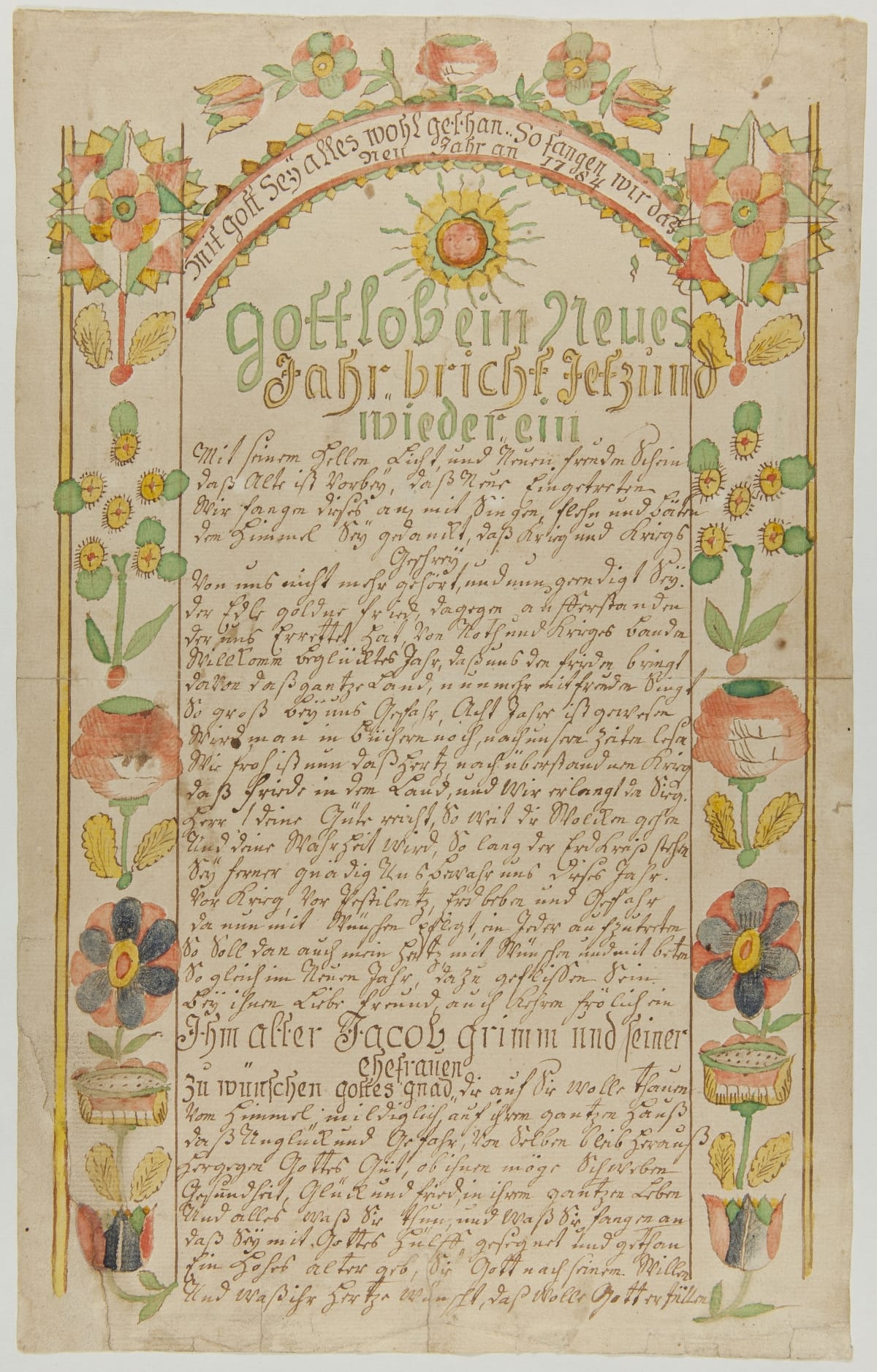
New Year’s Wish for Jacob Grimm and Family, 1784, made by Daniel Schumacher (active 1728-1787), worked in Berks, Lehigh, and Northampton Counties. 61.148.1 / THF237518
The Pennsylvania Germans, popularly known as the Pennsylvania “Dutch” (a corruption of the German word “Deutsche,” which literally means German) were a vibrant immigrant community active in southeastern Pennsylvania in the late 18th and early 19th centuries. By 1790, they made up about forty percent of the population and vied with those of British ancestry as the largest ethnic group. Even in urban areas, such as Lancaster and Philadelphia, the Germans were a sizeable minority.
Within the community itself there was great diversity, although many immigrated from the Palatinate area of southwestern Germany and approximately ninety percent were Protestants, with only ten percent Catholics.
What is remarkable about their legacy is their flamboyant, whimsical, playful, and highly imaginative folk art. They loved to decorate just about every type of household object, from small-scale items like ceramics to large-scale pieces like furniture, with instantly recognizable images. These artists are the most renowned among folk art collectors for their illuminated manuscripts, including marriage and birth certificates, family registers—essentially any type of recorded document. These pieces are called Fraktur.
The Compositions:
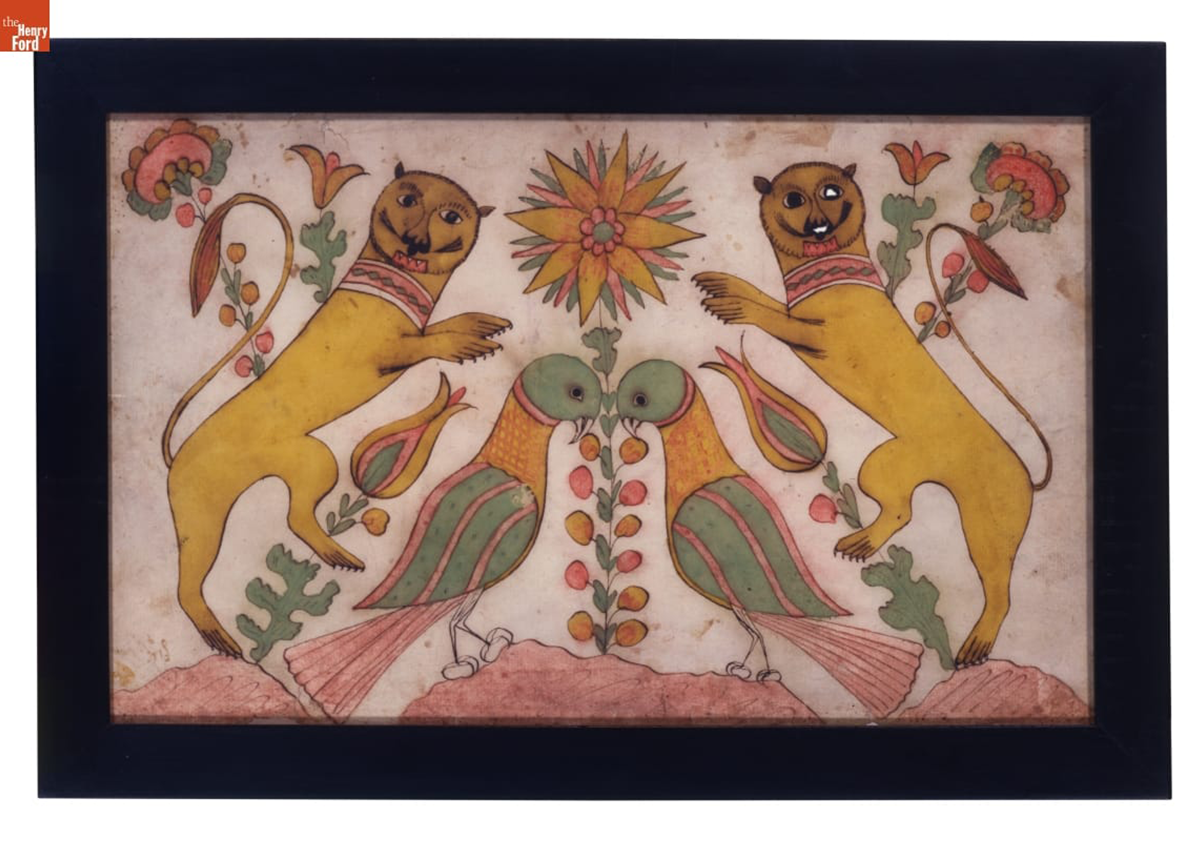
Confronted Lions and Birds, 1800-1820, made by Daniel Otto (active c. 1792-1822) Haines Township, Centre County, Pennsylvania, pen and ink and watercolor on woven paper, 00.3.3038 / THF119526
This Fraktur by Daniel Otto features a stylized central flower where everything on either side balances completely. This symmetry is the hallmark of folk art in general, and Pennsylvania German art in particular. Also note the whimsy or playfulness in the lions—they hardly look ferocious. This is yet another characteristic of Pennsylvania German art.
Decorative Motifs:
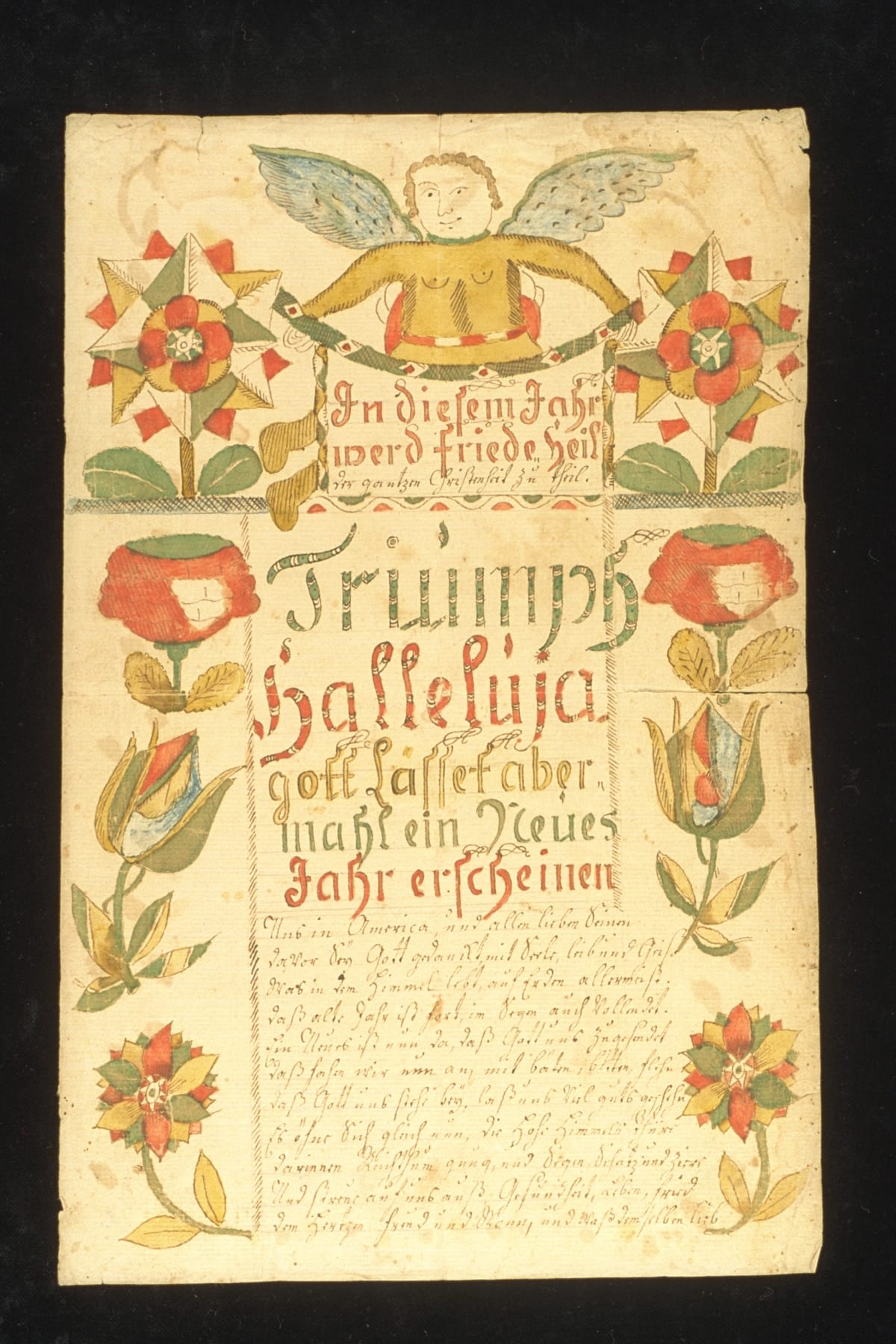
A New Year's Wish for Jacob Grimm and Family, circa 1775, made by Daniel Schumacher (active 1728–1787), worked in Berks, Lehigh, and Northampton Counties, 82.114.5 / THF305642
Notice that this piece, essentially an 18th-century New Year’s card, is symmetrically arranged around the text in the center. The highlight is the angel at the top. What is remarkable are the floral elements on either side. Tulips and stylized flowers are iconic design elements that appear in virtually every piece of Pennsylvania German art.
Another good example is this ceramic storage jar:
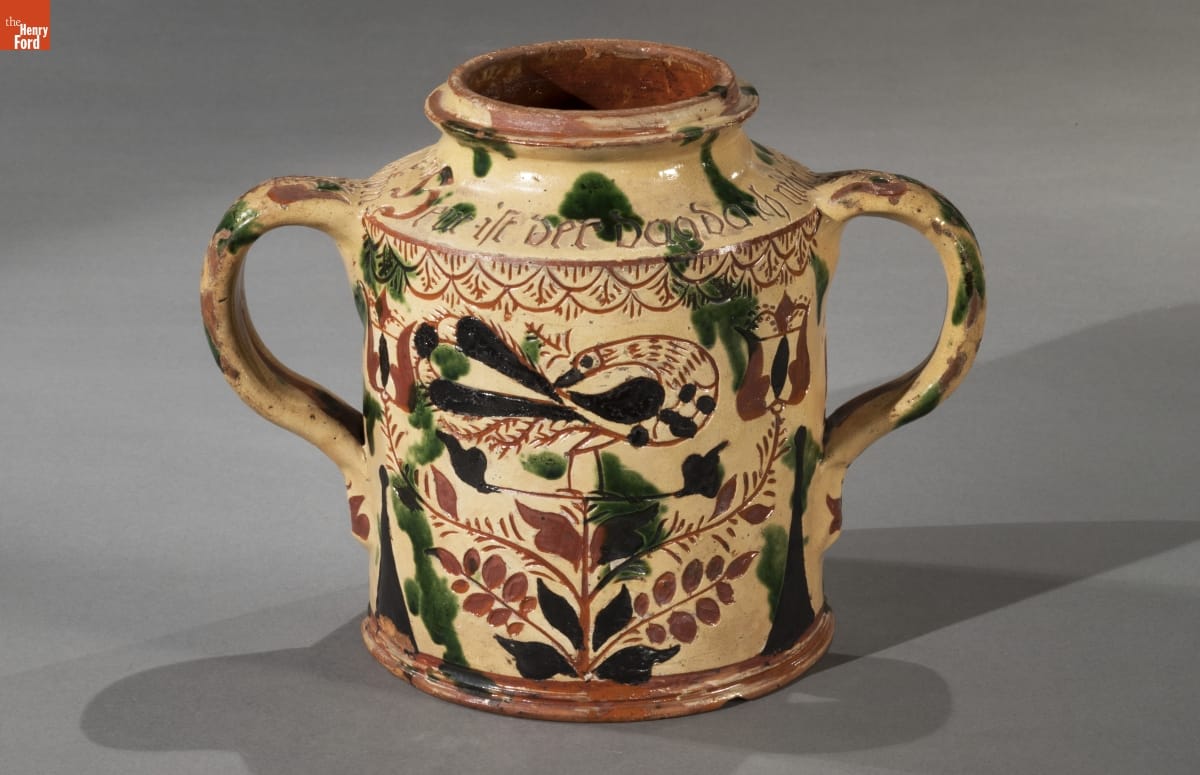
Storage jar, made between 1785-1796, made by George Hubener (1757-1828) Limerick Township, Montgomery County, Pennsylvania, 59.134.1 / THF177128
At the center of this jar, we find another peacock—which are in fact the 'confronted birds' in the second image above. Here, peacocks stand on the branches of a tree or bush. Notice that on either side, the floral branches terminate in tulip blossoms. Like peacocks or other stylized birds, the tulip is a motif frequently seen in Pennsylvania German folk art.
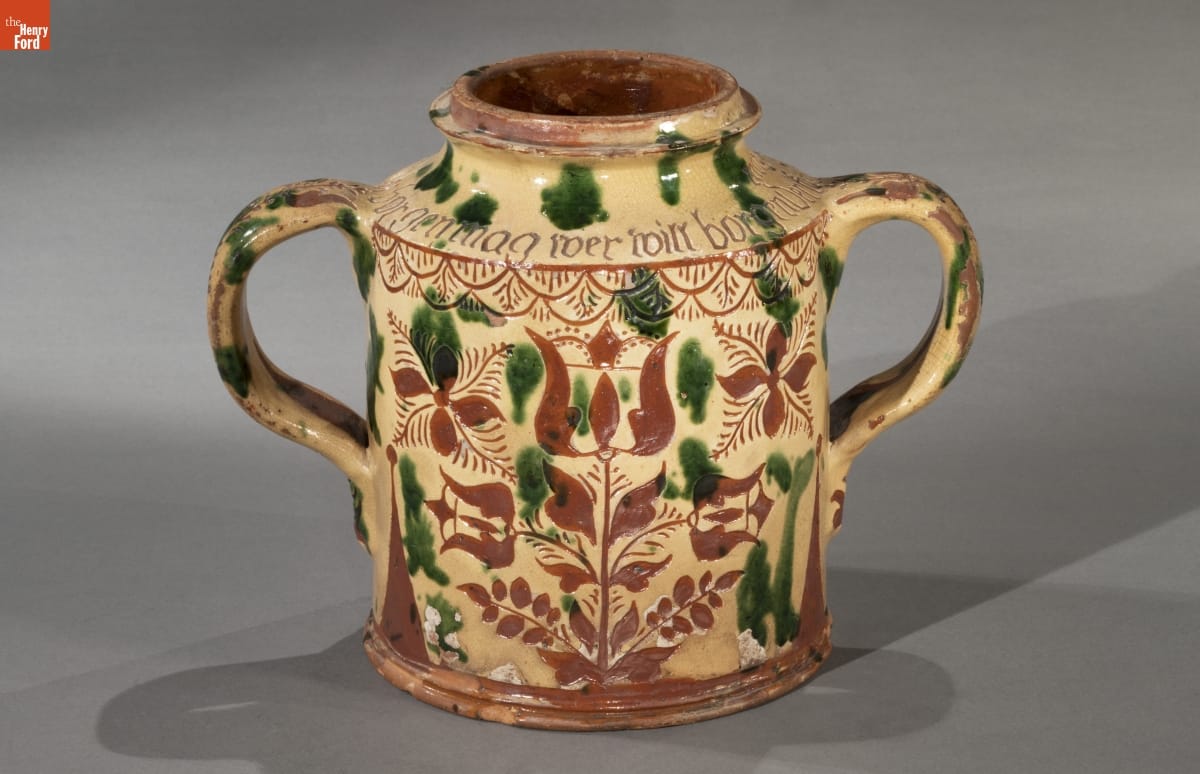
Reverse side of Storage jar, made between 1785-1796, made by George Hubener (1757-1828), Limerick Township, Montgomery County, Pennsylvania, 59.134.1 / THF177132
When we look at the reverse side of the jar, we see a variation of the image on the front. Of course, everything is arranged symmetrically, but instead of a bird at the center, we find a tulip blossom in its place. The space where the tulips were on the front side is now filled with abstracted floral elements.
The same use of symmetry is visible in this image of confronting peacocks:
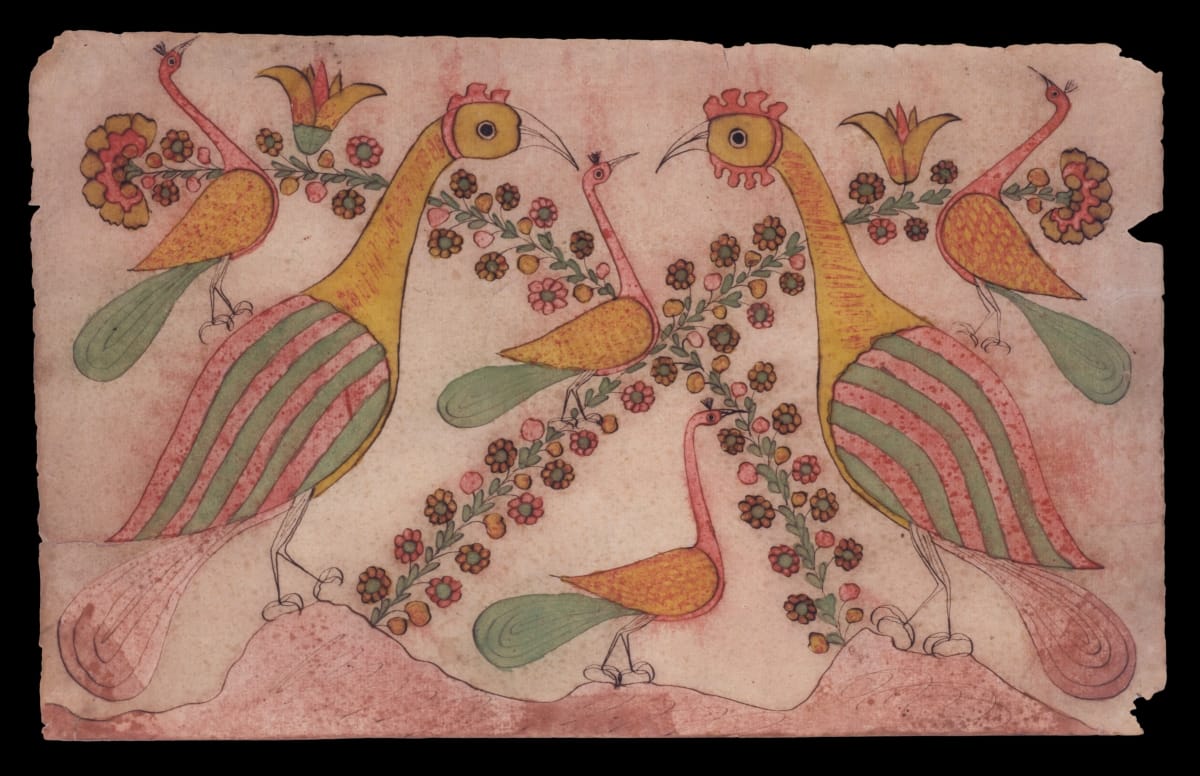
Confronted Peacocks, 1800-1820, made by Daniel Otto (active c. 1792-1822), Haines Township, Centre County, Pennsylvania, pen and ink and watercolor on wove paper, 29.2085.1 / THF119532
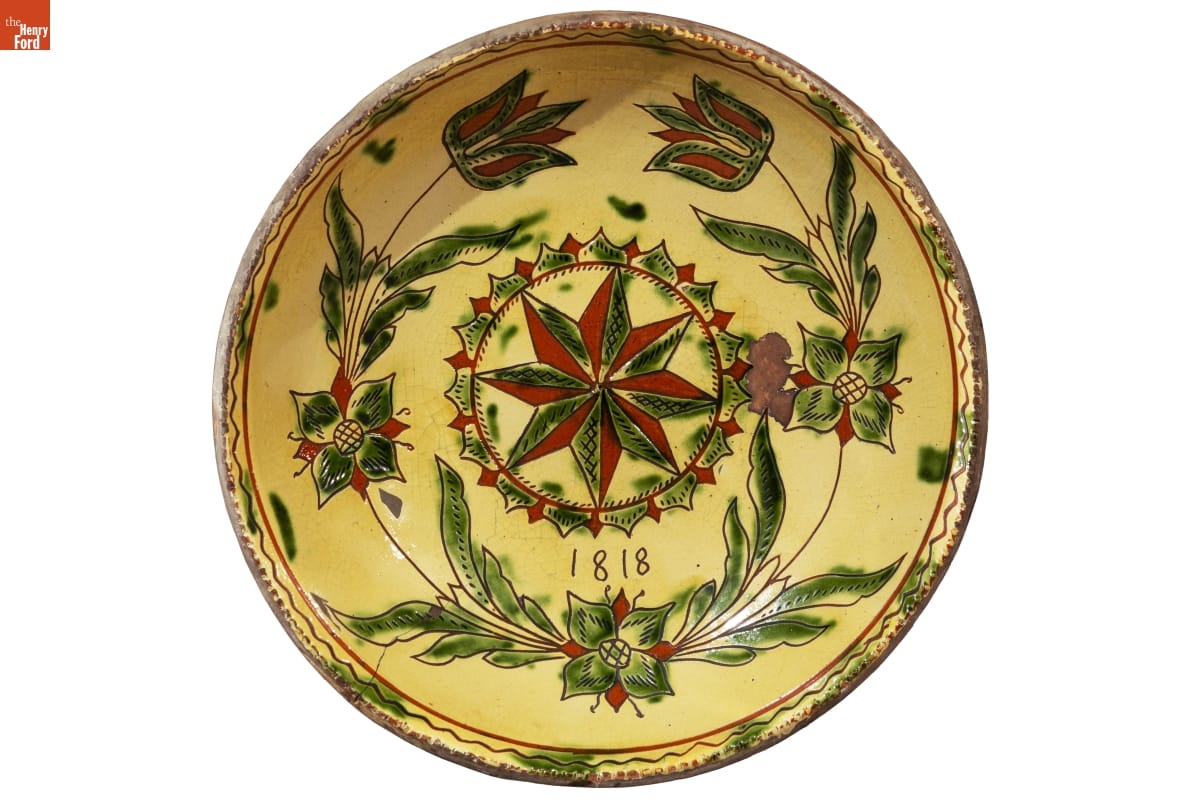
Plate, dated 1818, made by Andrew Headman, (active about 1756-1830), Rockhill Township, Bucks County, Pennsylvania, 56.54.1 / THF191114
This large plate, used primarily for decoration, is once again highly ornate, with a stylized star at the center. This is surrounded by a circle of triangles in red and green, which in turn is circled by a symmetrical row of ubiquitous tulips.
Furniture:
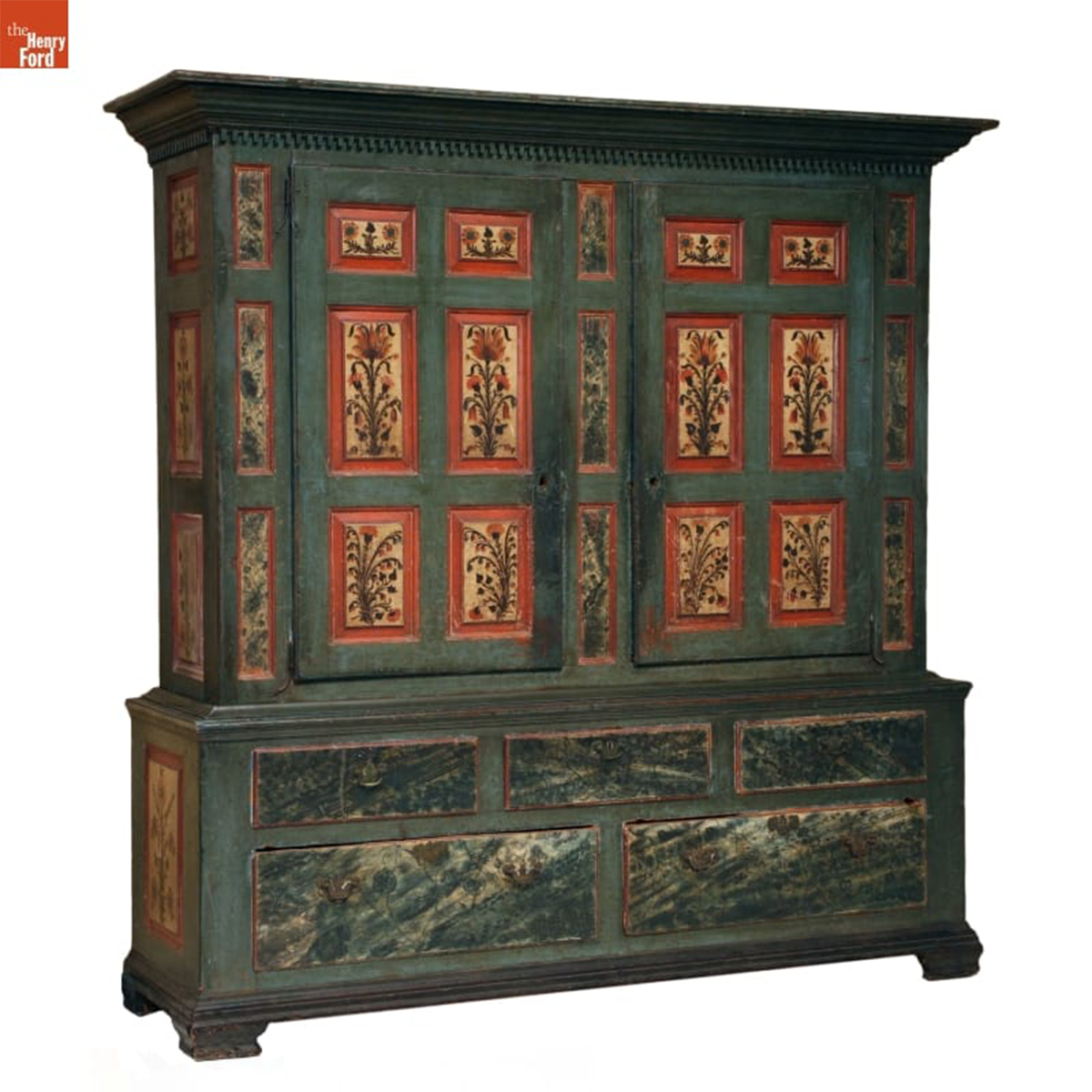
German American Wardrobe 1790-1800 59.80.1 / THF118499
Like all the examples we’ve seen, this wardrobe is decorated with flowers—some naturalistic, some stylized. It also uses reds against greens, like the plate above. Although called a wardrobe, or Schrank in German, it likely was used in a public room, like a parlor or dining room, where it was meant to impress guests. Of all the examples of Pennsylvania German folk art in the Museum’s collection, this is by far the largest and most impressive.
The Spreading Influence:
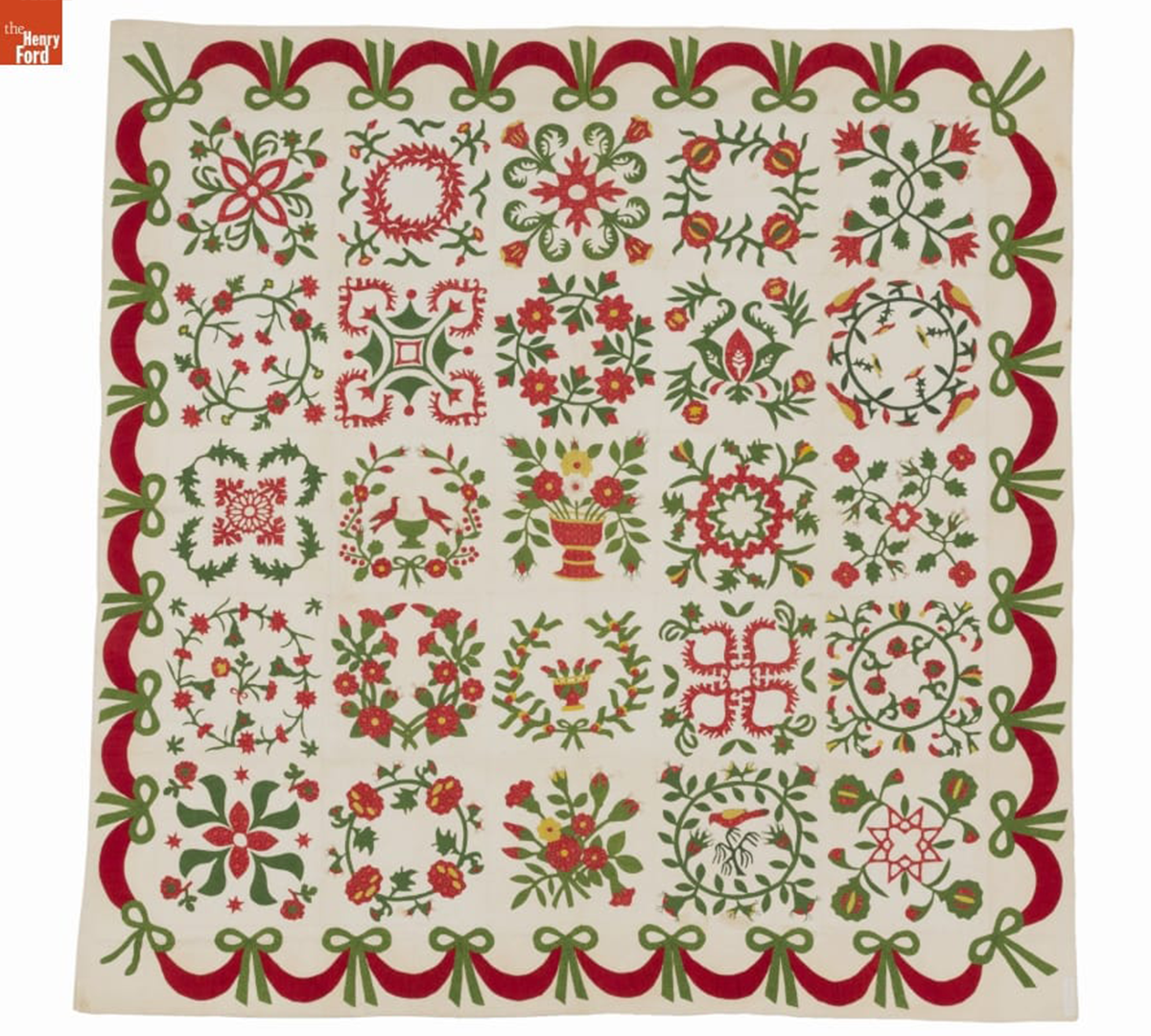
Album Quilt, probably made in southeastern Pennsylvania (perhaps in Chester County), circa 1850. One corner of this quilt carries an applied fabric strip with the inked inscription "Anne D. Morrison." 2016.22.1 / THF166494
By the middle of the 19th-century, the design vocabulary of the Pennsylvania Germans spread well beyond their community, encompassing the entire region. For example, we know that this “Album” quilt that utilizes the Pennsylvania German aesthetic was used by Anne Dawson Morrison (1798-1866), a prosperous Philadelphia Quaker.
These objects are just a small sampling of the large folk art collection of The Henry Ford. To see more, please go to https://www.thehenryford.org/collections-and-research/digital-collections/.
Charles Sable is Curator of Decorative Arts at The Henry Ford. Many thanks to Rachel Yerke-Osgood, Associate Curator at The Henry Ford, for editorial preparation assistance with this post.


Facebook Comments